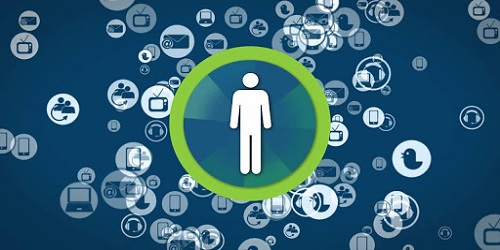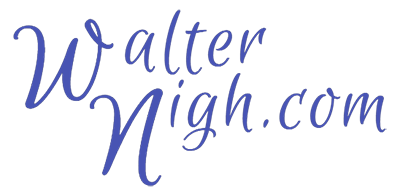
Module 11: Language, Lingo and a Brief History

Please Note: This Module is very long and jam-packed with lots of information. Please take your time because these terms are crucial for your on-going education. Not knowing these terms will leave you frustrated and overwhelmed!
Upon entering any new field of work or occupation, you always have a learning curve: new things to assimilate, systems to become familiar with, and terms to learn.
Every occupation has its own vocabulary and expressions. Doctors have their lingo, which can leave you a little stumped as to what they mean. Car repair specialists can easily lose you with their jargon which can, to you, indicate the end of the world! (Well, at least the end of your car!)
Entering the world of the Internet is the same. A specific language is spoken and understood between your computer, the internet, and those who work in the online space. If you don’t learn this language, words and terms will leave you feeling lost and confused. If you really want to be effective working on the internet, you must understand the language as well as speak the lingo!
As a First Stepper, don’t expect to learn them all overnight or even in a short period of time. After years of working online, I’m still learning new terms and definitions I encounter. Especially in this training series, please remember two words: “baby steps!”
I’ve put together essential terms for you to take those first steps, which will help get you up and running as quickly as possible. As you encounter new words or terms, I encourage you to take the time to search out their meanings.
This list deals with the internet, protocols, and general terminology. In Module 8 you learned terms and definitions specifically for Internet Marketing.
OK, here we go with a whole new batch of terminology:
1. Authentication (A really big word to start with!) – The method computers verify you are who you say you are. (That was easy, right?) It uses geo-location IP addresses, embedded “cookies”, double-entry passcodes, and internet “keys” to confirm your identity. (Not chocolate chip cookies. Internet cookies are defined soon!)
2. Blogs– Online news bulletins or personal articles about anything under the sun, over the moon, or beyond our galaxy. Anyone with a profession or hobby can create content in their genre and post these reports online. Blogs cover endless categories of interests to people worldwide – sports, health, beauty, golfing, survival techniques, dog care, love, dating, or obscure information about a widget used by eleven people in a country you’ve never heard of. Writing a response or review to a blog you have read can be beneficial to further engage existing customers or seek out new prospects. Successful blog sites become so popular that their creators collect revenue by selling advertising space to other businesses.
3. Bookmarks (also known as Favorites) – Links to quickly access sites you enjoy and don’t want to forget where they are! Most browsers offer the ability to save a URL or website address you frequent and want to visit again.
4. Browser– A free software package or application that allows you to connect to the internet and view pages with your computer, mobile phone, or tablet. Many browsers are available for web-walkers to use: Google Chrome, Internet Explorer, Apple Safari, and Firefox to name a few. (More on this in Browser Module3.)
5. Cloud Computing– An online storage system like a warehouse or distribution center you can access 24/7 from your home. “Cloud” relates to remote storage capability outside of your computer or external hard drives. Many software companies do not allow you to download their applications onto your computer or internet device, but give you to access to them through an online storage system. They can upgrade and control the program at will while allowing you to use the program and download your results. Email services are also cloud-based and accessible with a User ID and password. These days numerous businesses have created “cloud-based” storage capabilities to keep your photos, videos and content “in the cloud.”
6. Cookies– A small text file created by a website and stored on your computer temporarily for that session or permanently on your hard drive. (You can remove it!) Websites use these to recognize you and record your preferences.
7. Crawler (Another term for spider, bot, or robot) – An automated embedded program that creeps around and gathers information about websites to create a database with its findings. Internet search engines use this data to determine the ranking of websites.
8. Domain– Domains are the alphabetical section of a URL: the “address” where a website, document, or other information is located on the internet. (See URL below.) Domains are also the name of websites as in Google = www.google.com, Sony = www.sony.com, and PointerPointer = www.pointerpointer.com, a website whose sole purpose is to point at your pointer (or cursor, that little line or arrow on your computer that you’re probably moving around right now). It’s a great example of the infinite possibilities available on the internet. Check it out and be intrigued how they did it or why they did it.
9. Downloading– The process of copying, transferring, or moving a file or folder from a website to your own device or computer. Perhaps you have purchased music in the past from Amazon or iTunes, or a special ring-tone from another source and “downloaded” the files to play and hear them.
10. E-Commerce (Electronic Commerce) – The selling and buying of products and services on the internet. Online marketers engaging in E-commerce are very successful with this method of income generation. Recent market trends favor E-commerce for the next 10-15 years, as online shopping explodes. “Brick and mortar” businesses are suffering from this new trend and closing. This is definitely a viable option for your future success in the online space.
11. Email (Electronic Mail) – A written document or form sent from one computer to another. Your ESP or Email Service Provider (Google Gmail, Yahoo, AOL, Microsoft Outlook, Mozilla Thunderbird, Apple Mail and others) give you an email address specific to your account. Most providers have limits on how many you can send each day to prevent users from sending junk emails for promotion and sales.
12. Email Spam and Filters– Spam is slang for unwanted or unrequested email. “Spamming” is when an advertiser or person sends multiple emails promoting products, services, or fraudulent scams from Nigeria that are not requested by the receiver. It’s very annoying to find your email inbox jammed full of worthless information. ICANN (Internet Corporation for Assigned Number and Names) and international law addresses this issue. Your email accounts can be shut down and blacklisted if you are caught spamming. Spam filters are application to help weed out, quarantine, or separate those emails you do not want to see in your inbox. Through basic settings in your browser, you can automatically have emails from select sources sent immediately into a spam folder, or deleted. View the directions in your specific browser to activate the spam filters.
13. Encryption– An extensive mathematical (and perhaps magical) process of converting data into an unrecognizable format to protect your information from criminals who want to steal, crack, or hack your data and use it to their advantage. A decryption program will take the mish-mash, unscramble it, and make it legible and understandable for recipients. Very important when sending out financial information or documents with sensitive contents!
14. Firewall – A software program that protects your privacy and personal data as well as other files and folders on your computer. Viruses, malware, Trojans, key-loggers, zombies, ransom-ware, phishing bots, and other destructive programs are designed to steal, destroy or take hostage your information or computer. A good firewall protection program is essential to work safely and successfully on the internet.
15. FTP (File Transfer Protocol) – A common set of rules and procedures used for the uploading and downloading of files onto the internet. If you need to add or remove something from a website file, you might use an FTP program to accomplish this.
16. Home Page (or Anchor Page) – The first page you see when entering a website, generally eye-catching and compelling to hold a viewers attention long enough to view whatever you are offering, selling, or want them to know.
17. HTTP (Hypertext Transfer Protocol) and HTTPS (Hypertext Transfer Protocol Secure) – The initials or acronyms located at the beginning of HTTPS is the protocol with a higher level of encryption, which is good for banks, financial institutions, or other entities needing high security for data and information. When you give out private information (like your credit card numbers) on the internet, make sure you see “https:” at the beginning of the URL in your browser.
18. HTML (Hypertext Markup Language) and XML (eXtensible Markup Language) – The programming and coding language of most webpages.To see a sample, go to any webpage on the internet and right click anywhere on the page. Scroll down till you see, “View Page Source,” click on it, and a new page will open with a screen full of coded language. This is either HTML or XML. Learning to code with HTML is not necessary when you’re starting out, but basic knowledge of it will help you later on when you set up a website, sales page, or a landing capture page. Recently, an upgraded HTML version – HTML5 – has been introduced, which gives more options for the coding and designing process.
19. Hyperlink– A linked reference to data, information, website, or webpage in another location which you can follow directly by clicking, tapping, or hovering. These building blocks of the web provide the means for you to easily navigate around the internet and access information easily.


Whew! Lots of new words, however, we’re not through yet!
20. IP Address (Internet Protocol Address) – A numerical label assigned to each device connected to a computer network using the Internet Protocol for communication. Also, every website can be accessed by typing the IP address into your browser. This is not an easy thing to remember (or do) unless you are a computer “geek” (Oxford Dictionary: “Someone who knows a lot about science or technology, especially computers.” Urban Dictionary: “The people you pick on in high school and end up working for as an adult.”
21. ISP – (Internet Service Provider) An agency, company or business that gives you access to the internet. Most provide a variety of services billed monthly, which range from casual use with minimal download capability to unlimited usage, as well as different upload and download connection speeds. If you’re only using the internet for email, you can get by with a low-level package, but if you’re downloading or streaming movies and using online gaming, you’ll need a higher-speed connection.
22. Malware – Any program that can access, steal, or destroy your computer data, or even take your computer as a “hostage’. and force you to buy something you don’t want, or pay them to “unlock” your computer data. Beware!
23. Offline – Disconnecting from the internet and continuing a discussion or conversation by phone, or in person, or working on your computer when it is not online.
24. Password– A personalized set of letters, numbers, and symbols to authenticate your entry into areas of the digital world. It’s the key that unlocks the security wall around your personal data or grants you access into programs and online memberships. You should keep your passwords in a private, secure location known only by you. It’s a challenge to remember all your passwords and to remember where your private, secure location is!
25. Phishing– Emails coming from a familiar site you have might have visited, but have been copied, altered or cloned. You might mistakenly take these fake messages for the real thing and give out your private information. Don’t give out your private details by email! If you get an email from a bank or financial institution requesting such info, contact them directly by email or by phone unless you absolutely, for sure, cross your heart and hope to die, can verify the email is authentic.
These phishing emails often direct you to a website clone that asks you to “update” your password, credit card, or bank account numbers that the legitimate organization already has. Beware again!
26. Router– A hardware device that receives the signal from your Internet Service Provider and makes it available to you either with a cable, WIFI signal or satellite dish. Many ISPs will provide a router at no charge when you sign up for their services.
27. Social Media – A general term for any website encouraging interaction and engagement with family, friends, or businesses, such as Facebook, Instagram, Snapchat, LinkedIn, Tumblr, YouTube, and Pinterest. Another note of warning to you: Be careful when you divulge private and personal information! It can be stolen or hacked or used in nefarious ways that will make your life miserable!
28. SSL (Secure Sockets Layer) – An encryption web protocol that helps keep data safe when being transmitted across the internet. All legitimate shopping sites will have an SSL certificate. If your browser warns you “No SSL Certificate!” or alerts you of a problem with it, you need to be very careful what information you give the website. One indication a website has an authentic and active SSL is the letters “https” in front of the URL in the if you see in your browser’s address or location bar. Better yet, before the https, it will say “SECURE | https”.
29. Surfing the web– Slang for browsing or jumping from one site to another. You may surf the web to gather data or information about a certain subject, to watch videos, or look for something of interest to read.
30. Temporary Internet Files– A folder on your computer or connection device that stores information about websites you have visited and enables the webpage will load faster when you revisit it. You should empty this folder periodically because it can take up a lot of space.
What’s the difference between piloting an airplane and running your own online business?
Watch this video to find the answer! I think you’ll be surprised!
Ok, we are almost done with our new vocabulary and terms.
Just a few more to go . . .
31. Trojan– Named after the famous “Trojan Horse” story, this hacker file or program comes into your computer because you allowed it to. You might have even welcomed the intruder into your home! They may lodge in your computer for days or months before it is activated – causing your computer harm and endangering your personal data and information. Be careful what you click on, what links you follow, and what emails you open. If you do not know where the email comes from or recognize the sender, do not open it. These dangerous files may be activated simply by clicking on it!
32. URL(Uniform Resource Locator) – Uniform Resource Locator – The address of a resource or webpage on the internet, like a street address for a house or business. Composed of different codes for online protocols, URLs will take you to millions of resources on the internet and give you access to them.
33. Web Address– (See also URL) The “human-friendly” or layman’s term for URL, a series or numbers or just the name of the website as in, www.google.com. You could not browse, surf, or access anything on the internet without a web address or URL to take you there.
34. Web Hosting– Companies that provide services offering space, storage, and other benefits for websites, including programs from their web server to help you create your website, protect it, and bring visitors in.
35. Webpage and Website – What you see when your browser connects to the internet: a hypertext (HTTP) document containing text and images. Several webpages with related content linked together make up a website.
36. Web Server – A program that responds to website requests and sends out HTTP information, or the dedicated hardware, drives, or computers where the program resides. Web hosting companies have large servers and other equipment to service the websites and data they house.
(In other First Steps modules, I’ll add to this list when introducing new concepts and strategies for Internet Marketing.)
